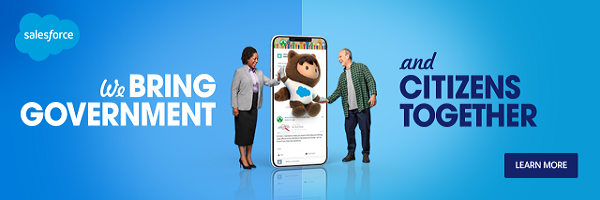Over the last decade, the public sector has made significant progress in digitising public services and interactions with citizens and businesses. Despite its hugely disruptive implications, the Covid-19 pandemic has served as an added accelerant to digital transformation, and the public sector has responded admirably to remote working. Many public servants rely on face-to-face interactions to deliver vital services, which can be challenging, but the pandemic has provided an impetus for tech-driven change supporting evolving working practices.
Today’s citizens are digitally savvy and expect to be able to interact with public sector departments with the ease they experience in their consumer lives
Despite progress being made, legacy remains a significant inhibitor. Legacy IT is difficult to change and expensive to manage, maintain and support. Much budget is spent simply “keeping the lights on”. These challenges have fuelled a common (mis)perception that public sector organisations lag behind commercial businesses when it comes to digital transformation. Whilst this may be true in some areas, the public sector is more digitally advanced than people often realise.
From a personal perspective, I don’t think it is fair to say that the public sector has been left behind or lags behind as many public sector organisations are doing a fantastic job, but there’s always more that needs to be done, and legacy is a significant barrier.
Covid-19 has accelerated the pace of change in enabling new ways of working, most of which are digitally enabled. But change will continue to be a constant, particularly when it comes to the expectations of citizens.
Today’s citizens are digitally savvy and expect to be able to interact with public sector departments with the ease they experience in their consumer lives. However, with departments facing legacy challenges, deployment of new solutions can be slow. To meet growing citizen expectations, a focus on speed is critical.
Having a single view of a citizen’s engagement across phone, web, social and face to face will transform the way services are delivered, building trust and confidence.
With speed and efficiency in mind, police forces have been adapting their use of social media. Broadcasting information via social channels has been happening for some time, but to meet the changing expectations of citizens, as well as a change in legislation, forces need to switch to using such platforms as a 2-way communication tool. While enhancing the citizen experience, it also equips officers with better quality information about who they are engaging with.
Citizen Enhancements
As a citizen, the options available to engage with your local police force have until recently been via phone or via webforms using Single Online Home (21 out of 43 UK police forces are live at last count). Enhancing these channels with a 2-way social media capability will widen the appeal to a growing digital-first citizen demographic and enable police forces to engage with parts of their local communities which may not have previously been accessible. Leveraging social media to interact with citizens is also an opportunity to foster transparency, as messages can be read and responded to in real time.
Having a single view of a citizen’s engagement across phone, web, social and face to face will transform the way services are delivered, building trust and confidence. This is especially valuable when you can drill down to a specific crime or complaint by using phone Calling Line Identity, or social identifiers, which can enable an officer to have case history to hand before taking a call or web engagement.
Salesforce delivers a single view of the citizen, integrating across a range of technologies, including Salesforce Marketing Cloud for digital marketing automation and analytics and MuleSoft to build connected experiences. Tableau’s data visualisations provide insights to enable data driven decision making.
Salesforce delivers a single view of the citizen, integrating across a range of technologies, including Salesforce Marketing Cloud for digital marketing automation and analytics and MuleSoft to build connected experiences. Tableau’s data visualisations provide insights to enable data driven decision making. Numerous accelerators are pre-built. Everything is highly configurable meaning customers don’t need armies of developers, freeing up budgets and resources to focus on digital transformation, including legacy retirement – the more you transform the more the costs decrease.
Salesforce supports digital transformation roadmaps in such a way that they avoid stereotypical issues such as vendor lock-in, inflexibility, stagnation and eye-watering change costs. The platform can enable the public sector to rapidly deploy solutions and minimum viable products, build on them through configuration, plug-in integrations, and augment and enhance through an internally owned roadmap. Crucially, Salesforce’s position as the world’s number one CRM system, which runs through all of its products, enables citizens to self-serve in new ways.
Policing needs more citizens to self-serve, and we need public services to know everything there is to know about a citizen, relevant to each use case. When you have a good CRM and case management, information collected can be used, with the appropriate permissions and governance, across all services. Through capabilities such as Single Online Home for example, police forces have the ability to provide a more personalised service to every citizen, where the relevant information is shared with them to create a more positive and engaging experience.
All these things come together when you have an extensible platform approach, and this way we can truly transform the citizen experience. It then gives Police Force employees the time to focus on and resolve difficult cases, and not deal with run-of-the-mill tasks which can be undertaken by combinations of technology, artificial intelligence and analytics. A lot of public sector business is about sheer volume, and volume breeds complexity and cost. If we can simplify that, it costs less to serve, and everybody benefits.
For more information, visit www.salesforce.com



